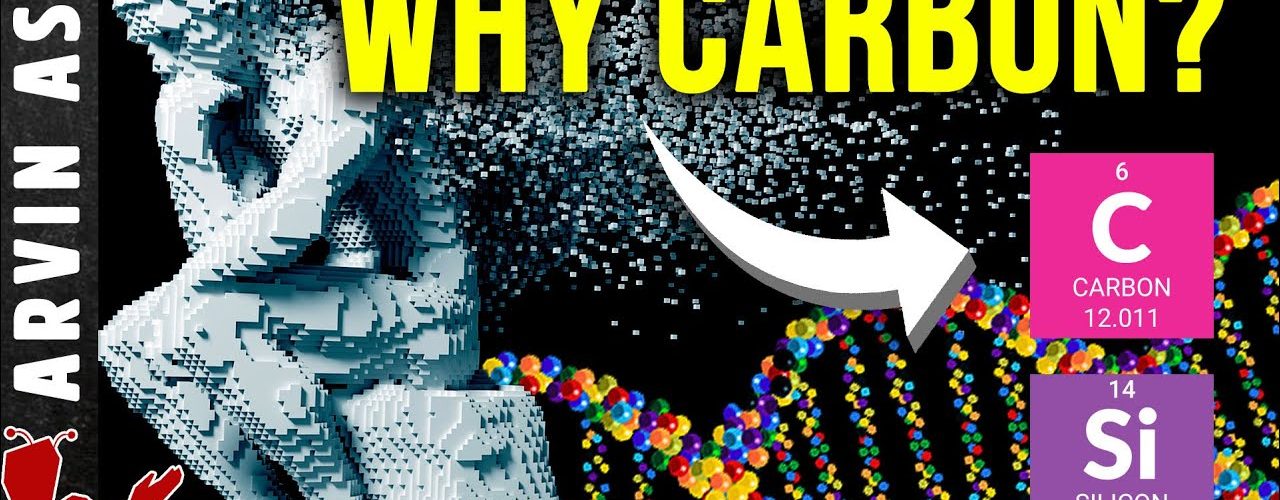Why is carbon the foundation of life? All life is based on carbon chemistry, But carbon is not the most abundant element on earth. 20% of our body is made up of carbon, but it comprises less than 1% of the mass of the earth’s atmosphere, oceans and crust. Why did life go to the trouble of concentrating Carbon 20 fold in our bodies, when other more abundant elements, like Oxygen and Silicon were available, or even Nitrogen which makes up 78% of our atmosphere?
The answer boils down to three things: complexity, abundance and stability. Complexity: Carbon is able to form the complex molecular structures needed for the complex chemistry that life requires. Each carbon atom can form a strong stable bond with up to 4 other atoms including other carbon atoms. This feature of carbon gives it the ability to form complex molecules, which is necessary for the complex chemical functions that life requires. Carbon is uniquely able to take part in a vast multitude of chemical processes. It can easily form long stable polymer chains that can, for example, carry a lot of information. This is the case for DNA.
The other elements are not as interesting. For example, oxygen with is the most abundant element, but it can form only 2 bonds. This means that once it bonds with 2 other atoms, it’s done. It can’t really form interesting scaffolds of complex molecules, like carbon can. Boron could be interesting because it can form 3 bonds, but it’s extremely rare, so it’s just not very available for life to have chosen it as its backbone.
The second factor that made carbon attractive for life to latch onto is abundance. 4 out of the top 5 of elements of the solar system are also among the top 5 elements making up the human body. There is plenty of it in the universe. It is very abundant. It’s easier to build something that you have a lot of. You can’t build a castle if you don’t have enough Lego bricks.
What about Silicon since it can also form 4 bonds like carbon, or Nitrogen which forms only 3 bonds, but makes up 78% of our atmosphere. This brings us to the third factor in determining the most suitable element that nature chose for life, stability, bond stability.
Silicon, like Carbon, it also has four valence electrons. This means it can also make four covalent bonds. For every molecule made out of carbon, there can be an analogous molecule with silicon in its place. Silicon also happens to be quite abundant on earth. In fact, there is more silicon on earth than carbon. It’s just locked in rocks within the earth’s crust.
The main difference between silicon and carbon is that has its unpaired electrons farther away from its nucleus, on its third shell, whereas carbon’s electrons are on its second shell, closer to the nucleus. This makes Silicon’s electrons more weakly bound to its nucleus. The consequence of this is that when silicon bonds with other atoms including itself, the bonds formed are weaker, and thus less stable.
This bond strength factor is also a reason Nitrogen is not well suited to be the backbone of organic chemistry, as its bond strength is roughly half of carbon. The backbone has to be strong enough to withstand the conditions under which other parts of the molecule break their bonds and react chemically with other molecules. So the carbon-carbon scaffold needs to remain intact while its functional components break apart. A molecular scaffold made from nitrogen or silicon would more easily break apart.
#carbonbasedlifeforms
#silicon
#carbon
So if we go back now to the periodic table, and look at the first 3 rows of elements. If we remove elements with very low abundance, this leaves only hydrogen, carbon, nitrogen and Silicon. And if we remove elements that can’t form more than two bonds, that eliminates hydrogen. Then if we remove those that cannot form strong single bonds to themselves to create a strong molecular backbone, this leaves pretty much only Carbon as the best choice. It is uniquely suited for life because of the best combination of abundance, ability to form complex structures, and stable bonds with other carbon atoms.







